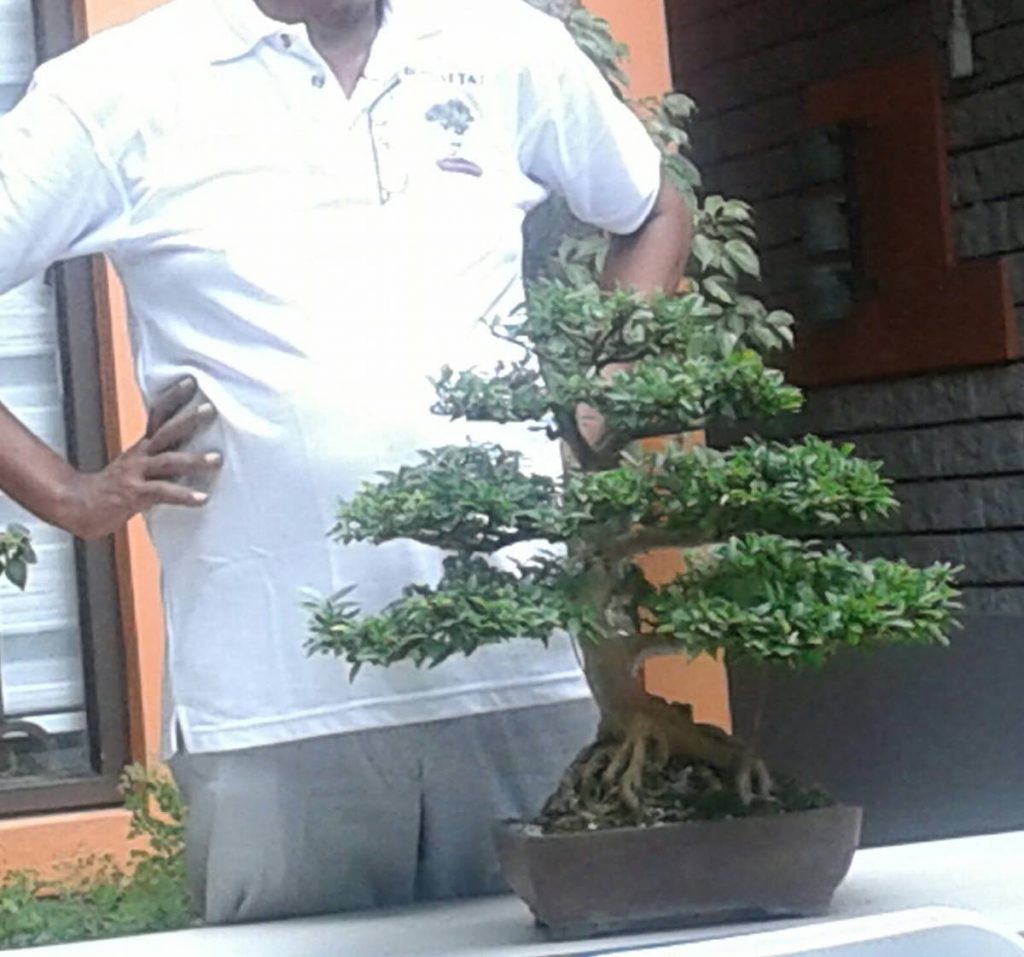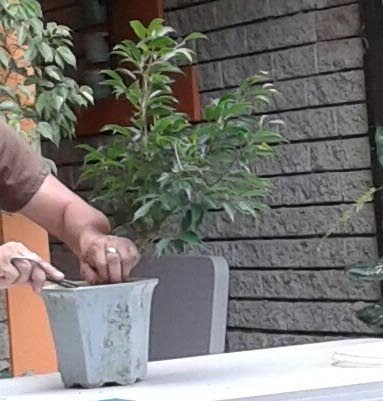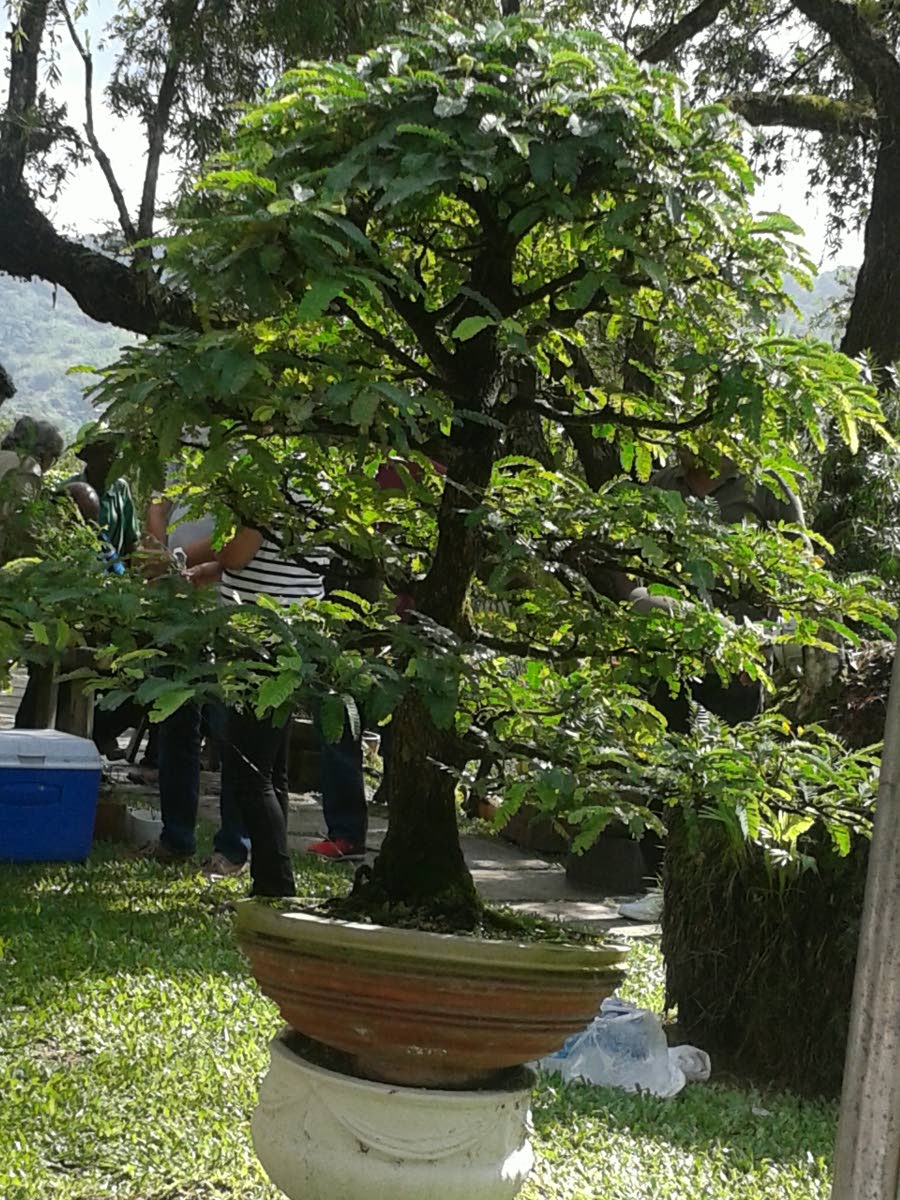The Bonsai Experience

There is something spectacular about bonsai pronounced (Bone Sigh), which captivates the hearts of many horticultural enthusiasts. Maybe it’s the fascination of growing miniature trees through this ancient art or the many creative styles which can be achieved by combining several techniques, including pruning and wiring, to create an effect which is pleasing to the eye. Whichever way you look at it, bonsai is art and everything changes when you decide to apply love and technique to manipulate roots and train the plant into twists and curves. Bonsai is the Japanese art of growing trees in a container and, through repeated pruning, not allowing them to reach their natural size.
Recently the Eastern Horticultural Club (EHC) was hosted by a senior member of the Bonsai TT at a workshop on the Introduction to Bonsai. A 20-member group journeyed to Diego Martin to learn about the art of bonsai and on arrival were given a tour of his garden. Bonsai specimens could be seen everywhere; each one beautiful yet distinctly different from the other. The bonsai were created from many different species of hardy plants, especially those with small leaves. The variety of bonsai plants we saw included ficus (Ficus benjamina), pomegranate (Punica granatum), schefflera (Schefflera arboricola), cherry (Prunus sp.), Chinese elm (Ulmus parvifolia), Japanese boxthorn (Serissa japonica), Lucaena (Lucaena sp.) and the common purple bougainvillea.
After the tour, we were given a demonstration of a simple bonsai technique on a ficus tree. Our hosts gave exceptionally clear explanations and demonstrations on what is required to produce a bonsai plant, from the types of plants suitable for bonsai, types of soil to use, techniques of pruning and wiring, appropriate pots and how to water and fertilise the plant after repotting. We learnt how to prepare the root ball, how to select branches to wire and which part of the branch should be pruned. It was indeed incredible to witness the transformation of the ficus, at the end of the hour long process. We were all eager to practice the technique that we had learnt and one member chose the Fukien tea or Philippine tea tree (Ehretia buxifolia), a very popular plant for bonsai. Being a tropical evergreen shrub it grows well in our climate. This plant produces small white flowers which turn into small berries thus changing the look of the bonsai at various times of the year
After a short break we were introduced to a more advanced technique used to produce a bonsai plant and to some members this was the most interesting part of the workshop. This is one member’s account: “The ashoka tree (Polyalthia longifolia) such as the four in my garden, has large leaves, a conical shape and can grow well over 40 feet in height, so my interest in how the specimen on show would be turned into a bonsai plant was heightened. The specimen was approximately four feet in height with a trunk diameter of about five inches.
Two Bonsai TT members pruned away the unwanted leaves and bark, then used power tools to cut, scrape, burn and shape the top to jagged points, which reminded me of a tree struck by lightning. Branches were wired to grow into the desired shape. Skill and artistry were on show as the two men worked on this specimen.
After all this was done and they were satisfied with the shape, a liquid was brushed on to the bare burnt top to give it an aged look (this would whiten more with time), the roots were trimmed and freed up of some soil, and the tree was transplanted into another container. The soil was poked a few times to eliminate air pockets which could cause erosion and a generous amount of water was applied to the base. I am now looking at my four full grown Ashoka trees with new eyes!” The members of the EHC thoroughly enjoyed the workshop and the hospitality of the Bonsai TT and many of them now wish to try a bonsai plant of their own. If you are interested in learning the art, Bonsai TT may be contacted at 770-8340.
For further information contact the Eastern Horticultural Club at 357-5033, 720-2698 or easternhorticultural@hotmail.com The club meets on the first Saturday of every month (except public holidays) at 3 pm at Moreton Hall, Aramalaya Presbyterian Church, Cochrane Street, Tunapuna.




Comments
"The Bonsai Experience"